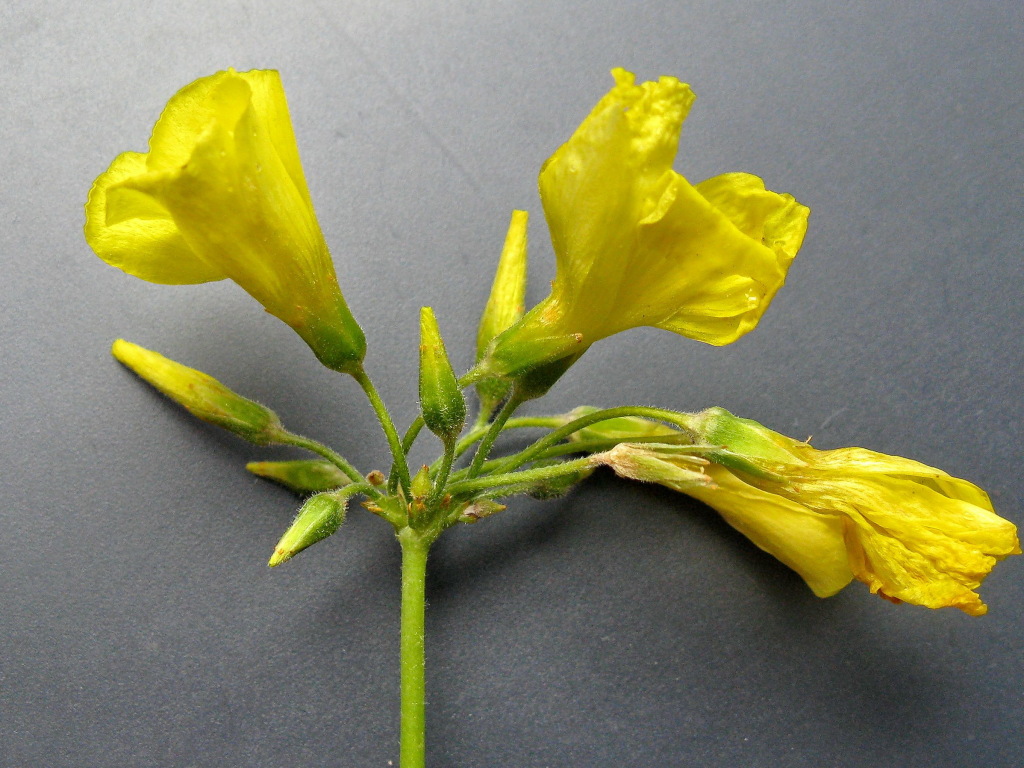Oxalis pes-caprae
L. SoursobHerb with stems only developed when plants crowded or growing in shade; bulbs ovoid, 8–15(–30) mm long, pointed, tunics pale brown; bulbils formed on white fleshy rhizome and in lower leaf axils. Leaves crowded, 3-foliolate; leaflets subsessile, cuneate-obcordate, 5–30 mm long, 5–30 mm wide, bilobed, green (often purple-flecked above), glabrous above, sparsely pubescent below, margins ciliate, sinus to c. one-quarter leaflet length, lobes oblong, divergent, apices rounded, 10–35 mm apart; petioles usually 5–20 cm long, terete, glabrescent to sparsely hairy; stipules membranous, narrow, to c. 10 mm long, abruptly tapering into petiole. Inflorescences basal, (3–)6–15(–20)-flowered; peduncles longer than leaves, sparsely hairy; pedicels covered with a mixture of antrorse simple hairs and spreading glandular hairs. Sepals lanceolate, 5–7 mm long, indumentum similar to pedicels, green at base, reddish at apex, usually with 2 orange apical calli. Petals 15–25 mm long, yellow. Capsules not seen in Victoria. Flowers mainly Jun.–Nov.
LoM, MuM, Wim, GleP, VVP, VRiv, MSB, RobP, MuF, GipP, OtP, WaP, Gold, CVU, GGr, DunT, NIS, EGL, EGU, HSF, HNF, OtR, Strz, VAlp. Naturalised all States, New Zealand. Native to South Africa. A widespread and difficult to eradicate weed of gardens, orchards, roadsides, river banks, arable land, and native vegetation.
Prolonged consumption by stock can cause chronic kidney damage and death.
Conn, B.J.; Jeanes, J.A.; Richards, P.G. (1999). Oxalidaceae. In: Walsh, N.G.; Entwisle, T.J., Flora of Victoria Vol. 4, Cornaceae to Asteraceae, pp. 207–218. Inkata Press, Melbourne.
 Spinning
Spinning




